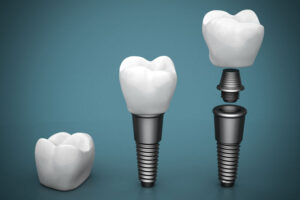Quick answer: can you get fake teeth?
Yes. Depending on your mouth, budget, and timeline you can choose removable dentures, fixed bridges, or dental implants. Each option has pros and cons for comfort, chewing, and long-term oral health.
Overview of the main options
– Full dentures — removable plates that replace a full arch of teeth. – Partial dentures — removable piece that fills gaps and clips to remaining teeth. – Dental implants (single and full-arch) — titanium posts placed in bone to hold crowns or full-arch teeth. – Implant-supported dentures — dentures that snap or screw onto implants for stability. – Fixed bridges — crowns fused together that span a gap and attach to nearby teeth.
Traditional dentures: what to expect
Full dentures
Full dentures replace all teeth in an upper or lower jaw. They’re made after impressions and try-ins; no surgery is required. Pros: lower upfront cost and non-surgical. Cons: they can slip, reduce chewing force, and long-term bone shrinkage occurs where teeth are missing.
Partial dentures
Partials fill one or several missing teeth and often clip to neighboring teeth. They are removable for cleaning and usually less expensive than implants. Expect periodic adjustments and replacement every few years as mouth shape changes.
Dental implants and implant-supported teeth
Single-tooth implants
A single implant replaces one tooth with a titanium post and a crown. The process includes implant placement, a healing period (often a few months), then a crown. Implants can last decades with good care and protect nearby teeth since they don’t require shaving down healthy teeth.
Implant-supported dentures & All-on-4
Implant-supported dentures secure a denture to multiple implants, improving chewing and stability. All-on-4 is a common full-arch method using four implants to support a fixed set of teeth. Benefits include better function and less slipping than traditional dentures. Bone quality matters — some people need grafts. Recovery varies but many resume light activity in days and full healing in months.
Bridges and other fixed options
Traditional bridges use crowns on adjacent teeth to hold a false tooth in place. Resin-bonded bridges attach with minimal enamel removal for smaller gaps. Bridges are good when nearby teeth are strong but they do impact those supporting teeth and may require future replacement.
How to choose: health, cost, and timing
Key factors: jaw bone health, gum disease status, budget, how permanent you want the solution, and how quickly you need teeth. Get a dental exam. Three things to discuss with your dentist: bone volume and need for grafting, total out-of-pocket cost and financing, and expected timeline from start to finished tooth.
Common patient questions
Can you get fake teeth same day? Some options like immediate dentures or temporary implants are possible, but final restorations usually take weeks to months. Will insurance cover fake teeth? Coverage varies. Some plans help with dentures/bridges; implants often have limited coverage. How long do fake teeth last? Dentures 5–10 years; bridges 7–15 years; implants decades with care. Can you eat normally with fake teeth? Yes over time. Implants and implant-supported teeth feel most like natural teeth. Traditional dentures require dietary adjustments at first.
Next steps and light practice note
To move forward, schedule a consultation and bring a list of medications, your dental history, and any recent X-rays. A dentist can evaluate your mouth, explain options, and discuss costs and financing. If you’d like help evaluating which “fake teeth” choice is best, our practice can perform the exam and outline your options.





